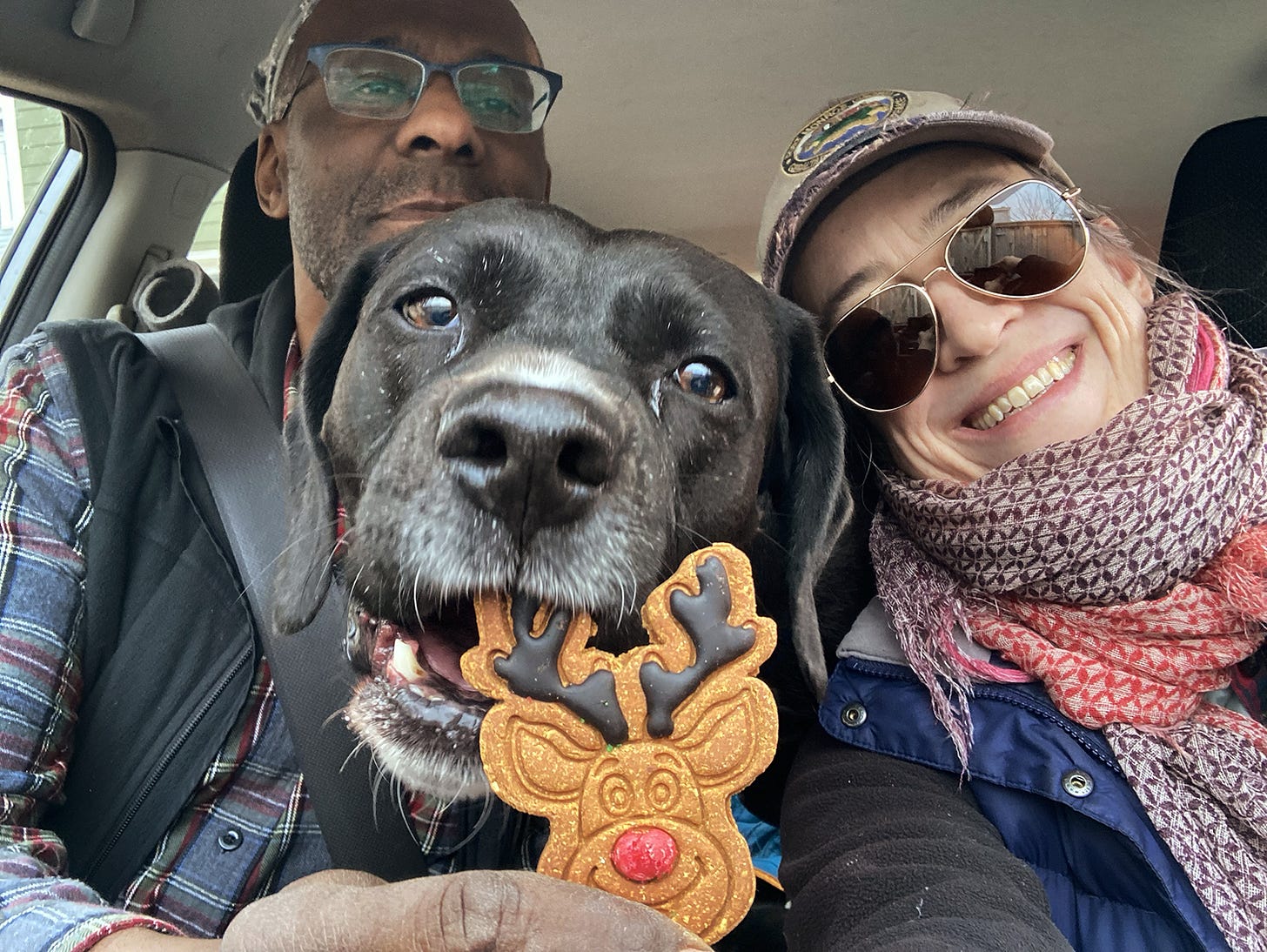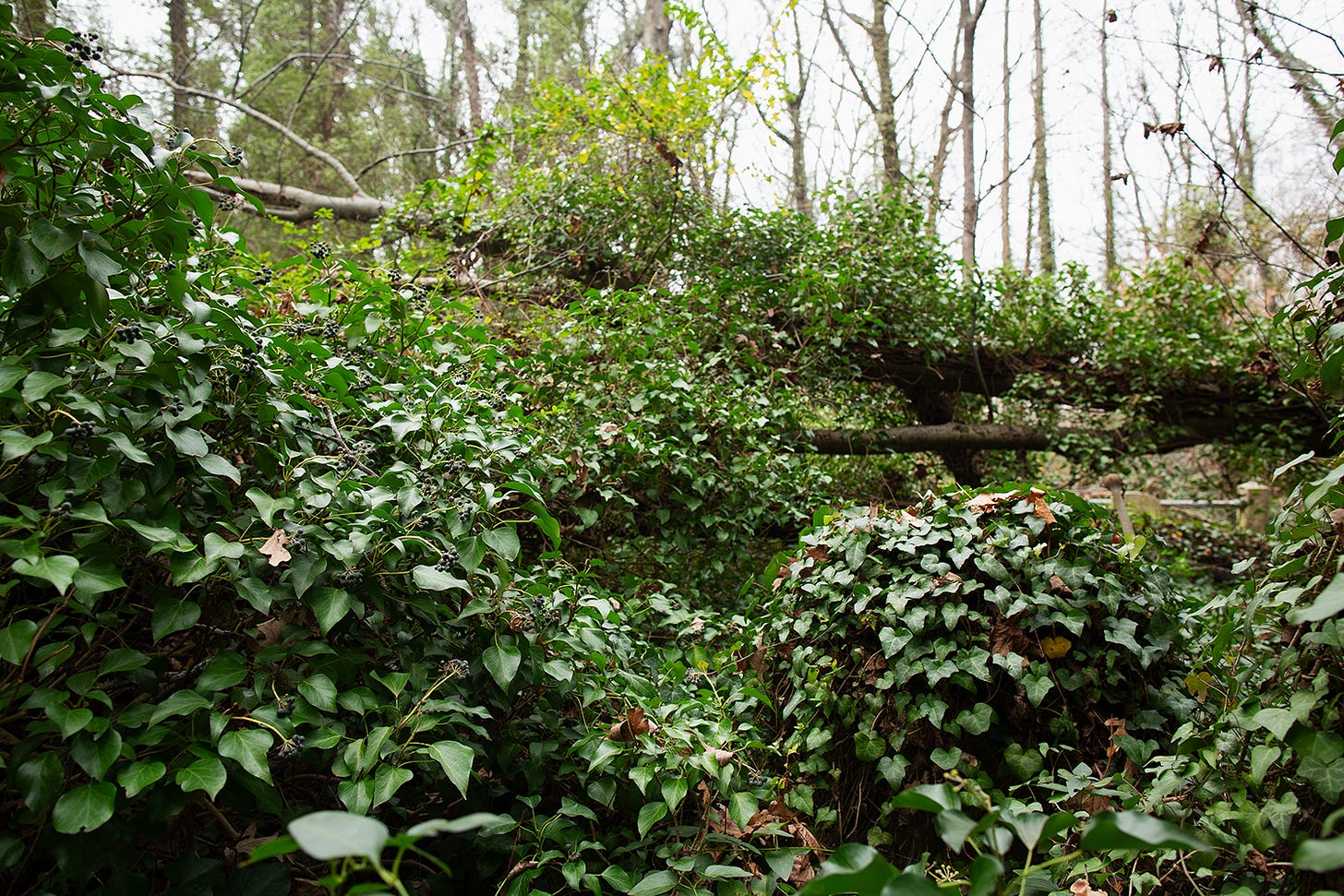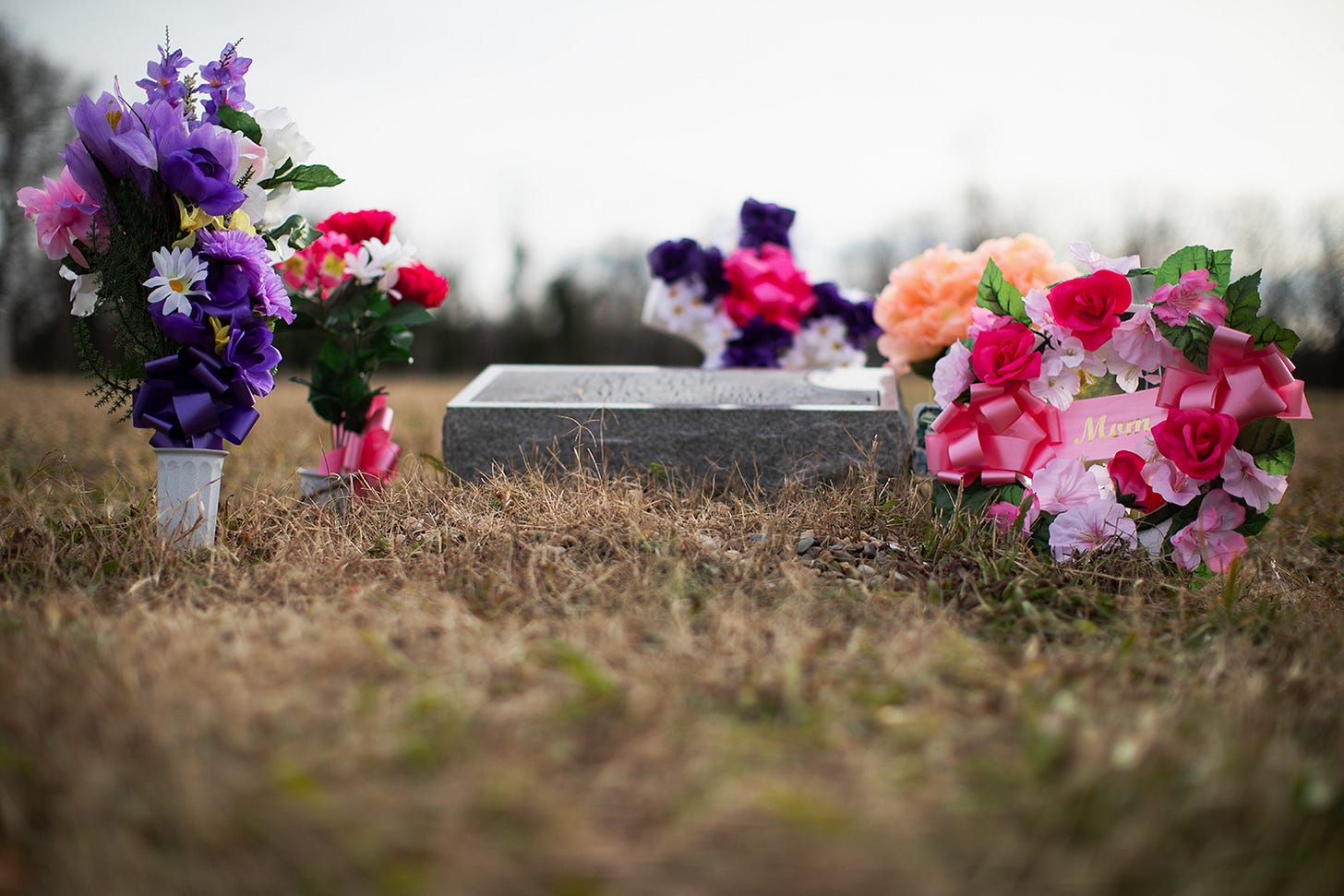"Don't get all morose," Erin said as we drove into East End and Evergreen today, Christmas.
"I'm not morose," I said. "That was yesterday." And the day before. Today’s mood: contemplative. I feel the bitter and the sweet when we work at the cemeteries, which has been almost every day for more than a year.
Earlier this week we rolled out at twilight, Teacake perched between us. Erin reminded me that it was the tenth anniversary of our reclamation work at East End.
To those of us who have put hands in dirt as well as people with kin laid to rest here and others who saw these cemeteries ten or even five years ago, it’s clear what we have accomplished. Sections of East End were rainforest-dense with overgrowth when we first visited in 2014. With our small band of core volunteers—John, Mark, Melissa, Bruce, Maurice, and Justin—and the thousands of people who have joined us, we have freed thousands of burial plots and grave markers from the vines, weeds, ivy, invasive trees, and in some sections, heaps of illegally dumped tires and garbage. We have reconnected families to their loved ones at these sites of public and personal memory. This is something to be proud of.
But if one’s only points of reference are well-maintained, well-funded, and cared-about cemeteries, East End and Evergreen may look forlorn, tragic, shameful.
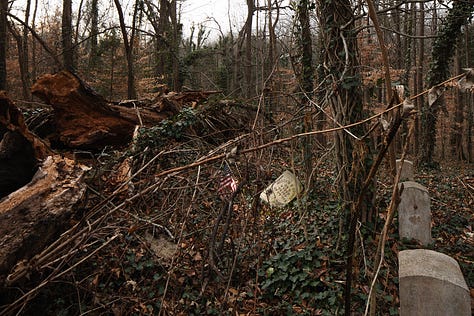
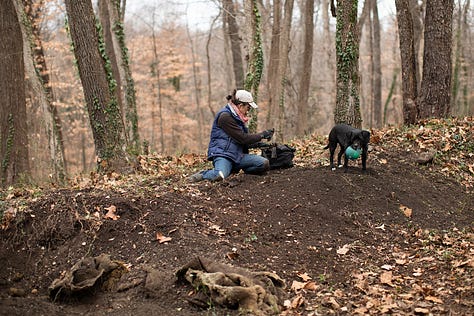
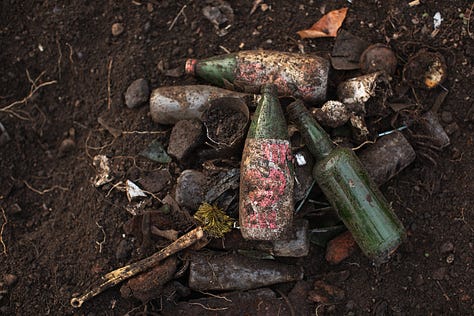
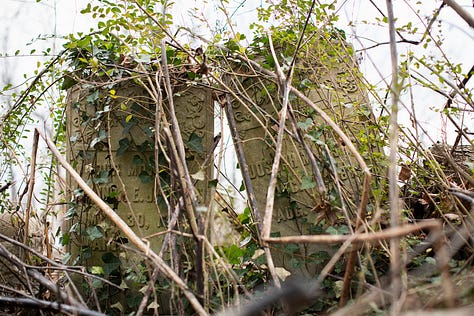
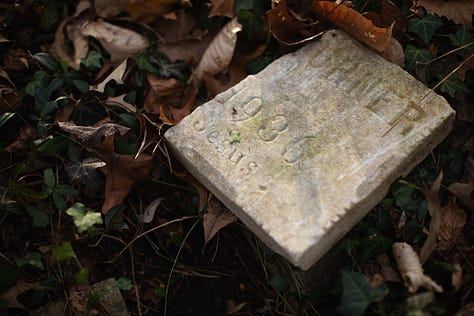
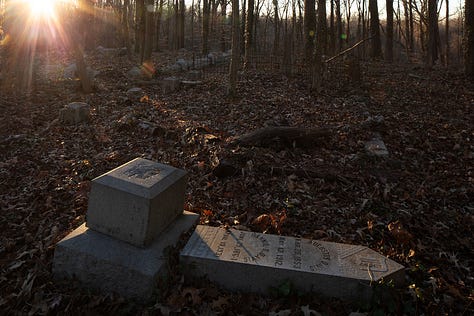
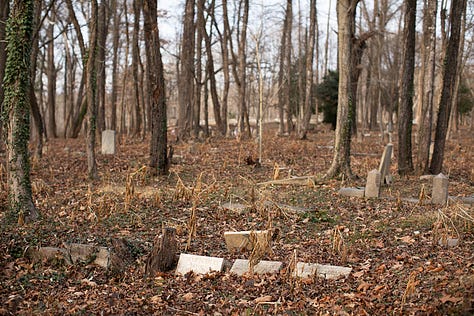
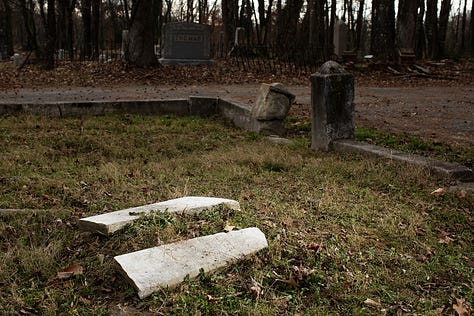
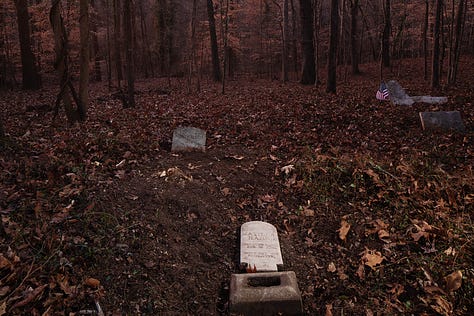
On December 13, 2014, we showed up at East End to film a Boy Scout troop participating in a weekend cleanup day. It had been organized by John Shuck, a white retiree, military veteran, and cemetery enthusiast who’d started a volunteer effort at East End in the summer of 2013. We beat the scouts there to find a pack of hunters, white men and boys, blasting away at deer. I told one rifle-toting man that children would soon arrive to volunteer. “Y’all mind getting out of the middle of the road just for about 15, 20 minutes?” he said. As my dad, Eddie, a Virginian and Jim Crow survivor would have said, that was mighty white of him. The scoutmaster, a Black man named Alan, called the cops while the boys—also African American—huddled in their van.
The officers who responded—yes, they were white—were incredulous. They couldn’t believe anyone was hunting here; they wouldn’t believe us, a multiracial, multigenerational gaggle of agitated people. Until BLAM! Told you so, I thought. They left us to investigate.
The cops blocked me and my cameraman from filming their chummy encounter with the hunters. Then, they drove out with them in a caravan of cars and pickups without a word.
The whole spectacle enraged me as a Black man—as a human. But it also thrilled me as a journalist. These white men behaved as if this were their preserve, as if it were their right to shoot in sacred space. This was the legacy of Jim Crow in living color, I thought. It also felt like matter-of-fact type of community resistance and resilience. For the boys’ sake, the adults—white folk and Black—walked and talked as if everything was OK, just as it should be. The scouts grabbed tools, the bigger the better, then got to work enthusiastically sawing away at tree of heaven saplings and yanking out English ivy.
I knew that these Black scouts were doing something both literal and symbolic: reclaiming our history with their hands. “People whose graves are here, they’re probably happy right now,” a 14-year-old boy told us as he wrestled with an armload of vines. “I think it’s a good thing we’re doing,” another boy said as he struggled to uproot a sapling. “We’re finding people’s ancestors.”
From a potential tragedy, beauty emerged.
The damage done to these sites by nature and Jim Crow is deep and grievous, and the task that remains is enormous. Another decade of our extreme gardening won't save and restore them. Millions of dollars won't either (though they would damn-sure help). Society—the people who comprise it—must care and believe in the power of Black history and those who made it, and then invest in that belief. Otherwise, Richmond, America, all of us will allow nature to swallow them again.
We're not naïve. The battle to make white America see, acknowledge, respect, and then simply let Black folk live and prosper as equals has been uphill, ugly, and too often bloody. It will be no easier in our increasingly hateful, retrogressive, xenophobic environment. But I know that the stories we tell—from those of my own great-grandparents, who self-emancipated from slavery in Virginia, to those of Richmonders such as Maggie L. Walker and John Mitchell Jr., local heroes who deserve national recognition—are transformative. These true stories of Black resistance, resilience, and achievement have enriched those we have shared them with: visitors to the cemeteries, kids from elementary school to college, and descendants themselves. But these stories have also fundamentally reshaped me into a stronger, better person and citizen. First, they challenged and undermined the indoctrination into white supremacy that I got during a lifetime saturated in American culture. Then, they replaced that ideology with facts. Of equal importance, my education in cemeteries has filled me with testimony by Black people of what they built—lives, families, institutions, movements, love—in the face of hatred.
Today, Christmas day, Erin extracted old bottles, auto parts, sneakers, carpeting, shards of plastic cups, from a nasty hummock of impacted dirt and privet. I made my usual litter-gathering rounds. I started where the pickings are almost always guaranteed, the assignation spot just a few feet from Walker’s and Mitchell's graves. I found two empty malt liquor bottles, Icehouse 40-ouncers, in the ivy just off the road, plus two used condoms in the road that were not there yesterday. Come all ye faithful indeed.
As I finished my sullen trash walk, I saw a small group at the center of Evergreen's newest section, where the most recent burials are. (The last was in 2016.) Five Black people of various ages were gathered around an ankle-high, gray stone marker. Clearly a family. The matriarch—grandma, I'm guessing—eyed me warily as I walked toward them in my fluorescent orange safety vest carrying a huge black trash bag. A patriarch-ish gent, maybe 70, looked up at me as he stuffed faded artificial flowers into a small, white plastic shopping bag. A young man and woman held each other. New decorations had already been placed around the stone. I knew I was interrupting, but I felt a need to make some contact with them. I’ll take your trash, then leave you alone, I said. The patriarch thanked me as he filled my bag.
"Have a blessed day, man," he said, smiling. I already had.



